Mount Mary Church Mumbai, officially known as the Basilica of Our Lady of the Mount Bandra is the most famous church in Mumbai that needs no introduction. If you are looking for top churches in Mumbai you will never find a list that has no mention of this church. It is to Mumbai what Notre Dame is to Paris.
While a lot is said and written about this popular church in Mumbai I decided to present this iconic local attraction in Mumbai my way. Considering the popularity of Mount Mary Church Bandra taking pictures is a bit challenging here especially when you visit on a Sunday.
Located in Bandra, Mount Mary Basilica is just 15-minute walk up the hill from St Andrew’s Church. So, if you are in Bandra to see St Andrew’s Church you can also visit Mount Mary Mumbai or vice versa.
However, let’s take a deep dive and find out more about the iconic Mount Mary’s Basilica.
The Origin of Mount Mary Bandra
If you have been following my posts by now you must have known my knack for injecting history into the content. Obviously, I try to make it as interesting as possible because I don’t want anyone to feel like they are in a history class.
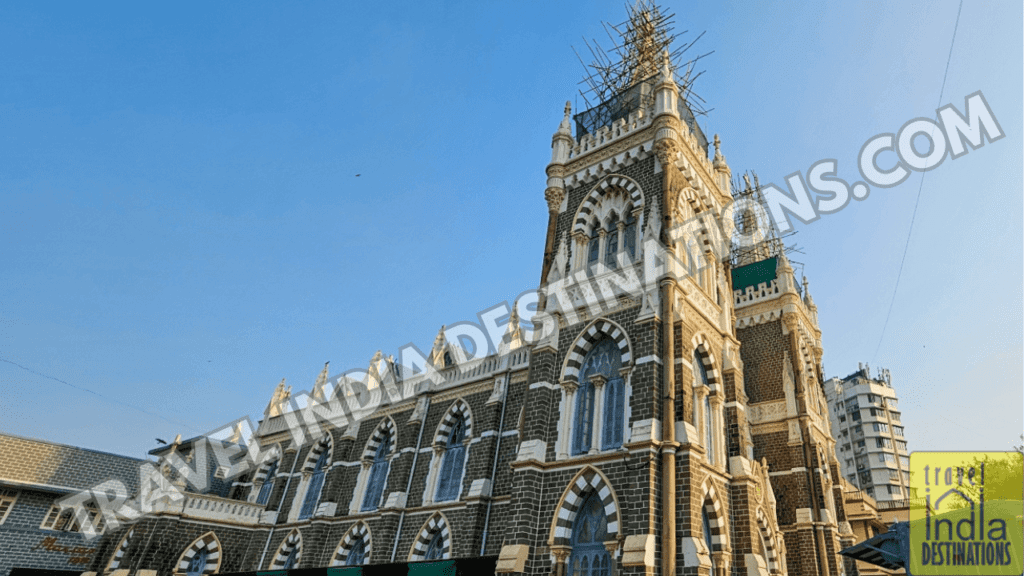
To begin with, we go back to the 16th century. This is somewhere around the same period that we talked about in the St Andrew’s post. So, we go back to 1568 when Portuguese Jesuits took control over the villages of Bandra. While many of the Jesuit Fathers were headquartered in the Church of Santa Anna, a mud oratory emerged on the hill for private worship in 1570.
Subsequently, Jesuit Fathers installed a wooden statue of Our Lady brought from Portugal. The statue was placed on the main altar. This attracted many local devotees who were now converted to Christianity.
By 1587, the popularity of this oratory grew considerably and The Mount Mary Oratory came under the authority of the Parish of Santa Anna.
Parallel to this, St Andrew’s Church was also being constructed and the number of devotees there was growing. By 1603, the entire population of Bandra was converted and the Jesuit Fathers had to manage the rapidly increasing number of devotees.
In 1616, the Parish of Santa Anna was bifurcated to make it convenient for the growing Christian population. For this, the parish of St Andrew’s was created. Soon, the Mount Mary Oratory was assigned to the newly formed Parish of St Andrew’s.
From Oratory to a Chapel
For the next 24 years, Mount Mary Oratory continued to gain immense popularity. This compelled the Portuguese to scale up the oratory into a chapel. In 1640, Mount Mary Oratory transformed into a chapel that sat on a mount overlooking the Arabian Sea. The Portuguese also built a garrison at Land’s End and used it as a vantage point.
22 years later in 1662, Catherine of Braganza married King Charles II and the seven islands of Bombay were handed over to the British in a dowry.
As mentioned earlier, by 1666, Mughal Emperor Shah Jahan who commissioned the Taj Mahal died while he was under house arrest. The Mughal army was now led by his son Aurangzeb who focused on rapid territory expansion.
While the British and the Mughals were scrambling for more territories, a group of Arab pirates sailing from Muscat attacked the Mount. Intending to loot and escape they ransacked the Shrine of Mount Mary. Furious over the fact that they didn’t get what they expected they chopped off the right forearm of the Our Lady statue.
Some stories claim that they also had intentions to burn the church when a swarm of bees attacked them. They quickly fled the scene to avoid any confrontation from the British or the Portuguese.
The Jesuit Fathers promptly replaced the damaged statue with the Our Lady of the Navigators statue for the devotees. This was brought from the side altar of St Andrew’s Church.
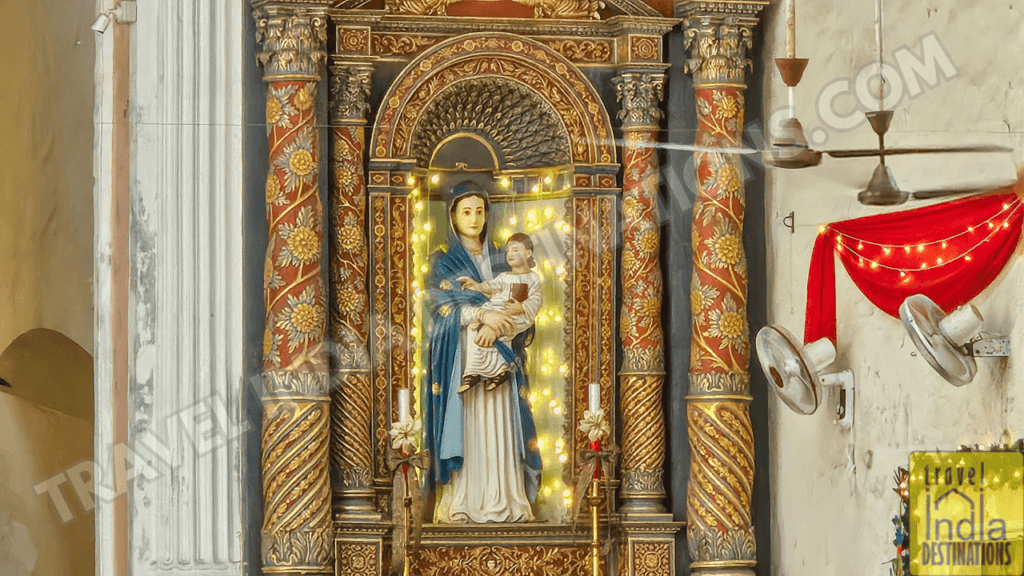
By 1718, the British in Bombay opened the Saint Thomas Cathedral which is now close to the Flora Fountain.
From 1690 to somewhere in the 1730s, the foreign colonial powers ruled Salsette Island and the seven islands of Bombay. However, in 1737, the tides turned when locals supported the Maratha army.
The Maratha army’s swift and decisive victories won them the Salsette Island. In 1739, the British chose to blow up the Church of Santa Anna to not allow Maratha to secure another vantage point. St Andrew’s Church because of its not-so-strategic location managed to stay undamaged.
For the next two decades, political instability made it hard for the devotees to visit the Mount Mary chapel regularly. Additionally, the chapel was not maintained due to a lack of priests.
From a Chapel to Church
In 1761, major construction work began to repair the chapel. The broken statue of Our Lady was repaired. A detachable Child Jesus statue was placed to cover the broken forearm of the statue.
In the same year, the statue of Our Lady of Navigators from St Andrew’s was returned to its original place. To this day, you can find Our Lady of the Navigators on the side altar in St Andrew’s Church. (as seen in the image above)
The Parsi Connection
Historically, the Mount Mary Church Mumbai also has a connection to my community – the Parsis. You can read more about who are Parsis and the rise and growth of Parsis in British India on my other blog.
However, here the story connects us to Sir Jamshetjee Jeejeebhoy.
He was a self-made businessman who made his fortune from the cotton and opium trade with China. In 1803, he married his maternal uncle’s daughter Avabai and decided to settle in Bombay.
However, his wife Avabai suffered a series of miscarriages leaving her distraught. She prayed at the Mount Mary’s Church and her next baby boy survived. In 1811, Sir Cursetjee Jamshetjee Jeejeebhoy was born. Avabai later gave birth to two more sons, Rustomjee and Sohrabjee Jeejeebhoy and a daughter Pirojabai.
By 1814, his relations with the British East India Company yielded him ample profits making him a millionaire. He bought his first ship named ‘Good Success’.
By the late 1830s, the plan to unify seven islands of Bombay was completed.
However, until 1845, most people who visited the Mount Mary Church from the seven islands of Bombay had to ferry across the Mahim Creek. This was dangerous, especially during the rough monsoon months.
The appeal was made to the government to create a safe passage for the devotees and other people in general. The government declined the appeal due to lack of funds.
Avabai Jeejeebhoy paid One Lakh Fifty-Seven Thousand rupees from her personal funds to construct the road which connects Bandra to Mahim Causeway. This eliminated the need to ferry thereafter.
Jamshetjee Jeejeebhoy is also credited for the construction of the steps on the eastern side of the Mount Mary Church Bandra.
In 1885, the railway line was linked bringing in more devotees to the Mount Mary Church Mumbai from all corners of Bombay.
From Church to Minor Basilica
In the year 1895, a major plague broke out in Bombay which had quite an impact on the socio-economic health of the city. Despite this, the Fathers of St Andrew decided to build a better edifice on the Mount.
The project was initiated in 1902. The current structure was ready by 1904.
In 1954, the Oratory of Our Lady of Fatima was opened to the public. This is also the year when the statue of Our Lady of the Mount was toured across various parishes in Bombay and Vasai. Know more about the history of Vasai.
In the same year, the church was given the status of Minor Basilica by Pope Pius XII.
In 1964, Pope Paul VI visited this Basilica when he was in Bombay for the International Eucharistic Congress.
St Pope John Paul II also visited this Basilica in 1986 upon his visit to India.
The Architecture
Overall, Mount Mary Basilica Bandra has a semi-gothic architecture. The architecture is carefully designed to transform a chapel into a church.
Right above the arch of the main portal, one can see the emblem of the Basilica – AM. This stands for Ave Maria. Around the letters, you can see a crown and two stems of lilies. The crown signifies Mary’s queenship and the lilies stand for virginal purity.
Above the emblem of the Basilica, you can also see an inscription saying ANNO JUBILAEI 1904. This was the year when the final construction of the church was complete.
On the sides, the tall spires jut high into the sky visible from Mahim Creek.
On the inside, you can see the murals depicting the Life of Mary. Also, you can find teakwood columns supported by a strong stone base. These columns hold the weight of the loft and even the main ceiling.
The floor tiles are from Mangalore while the blue doors are offer an inviting feel.
A Tour of Mount Mary Church
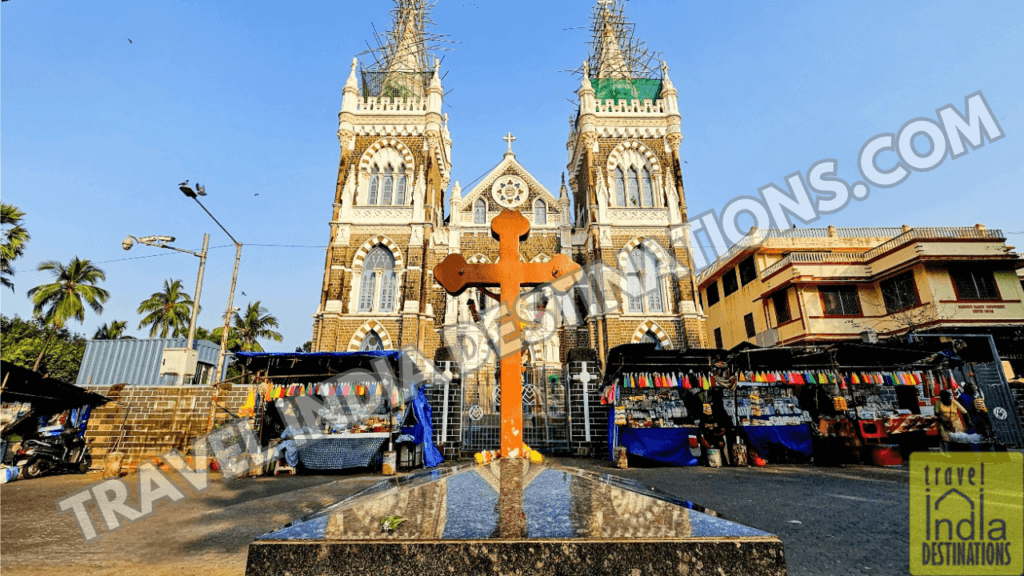
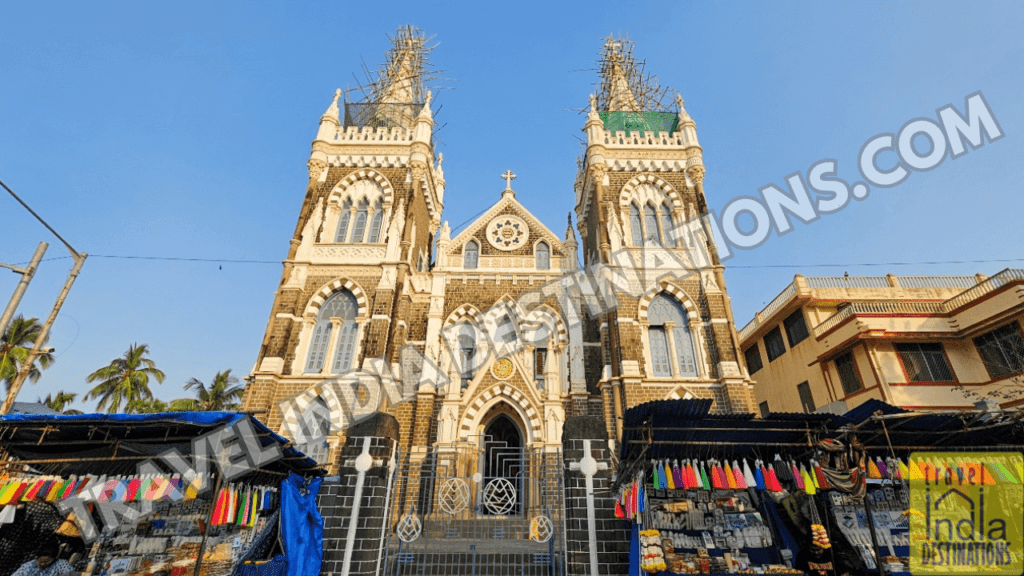
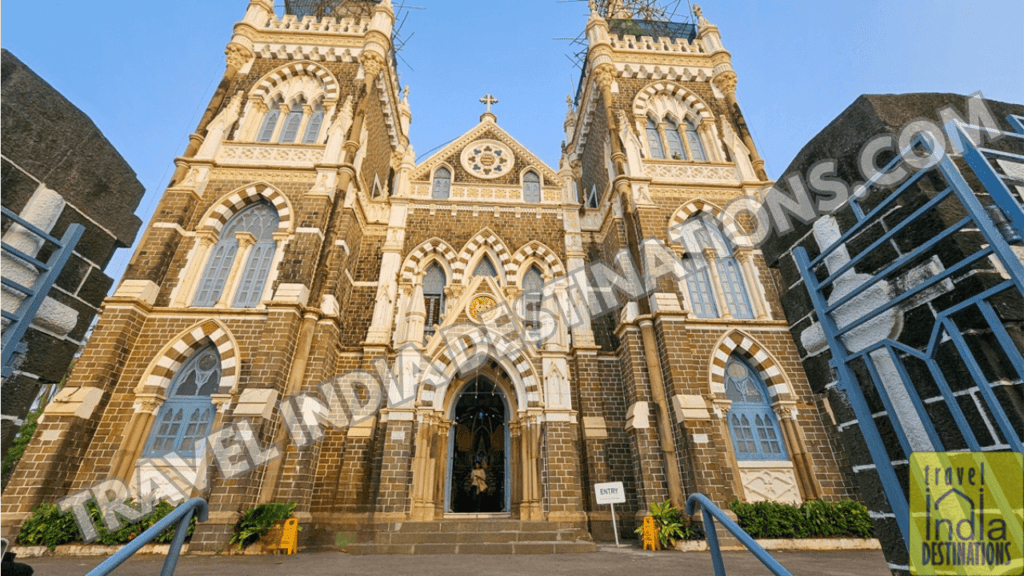
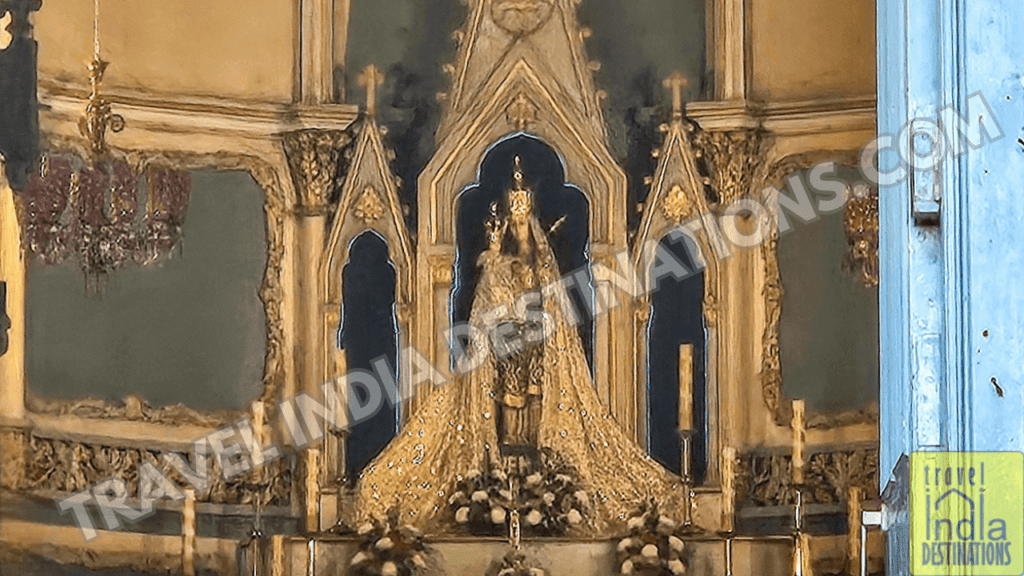
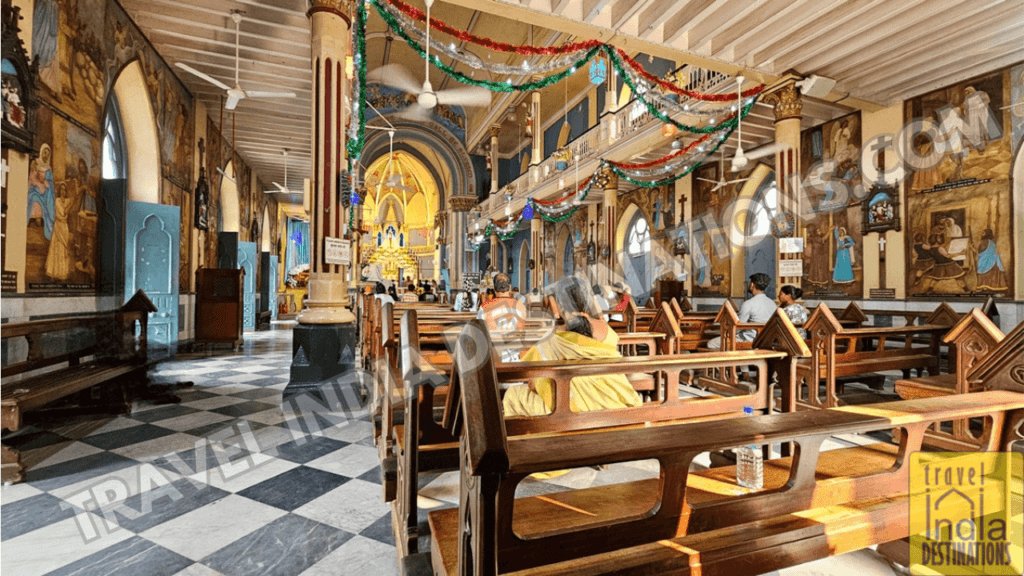
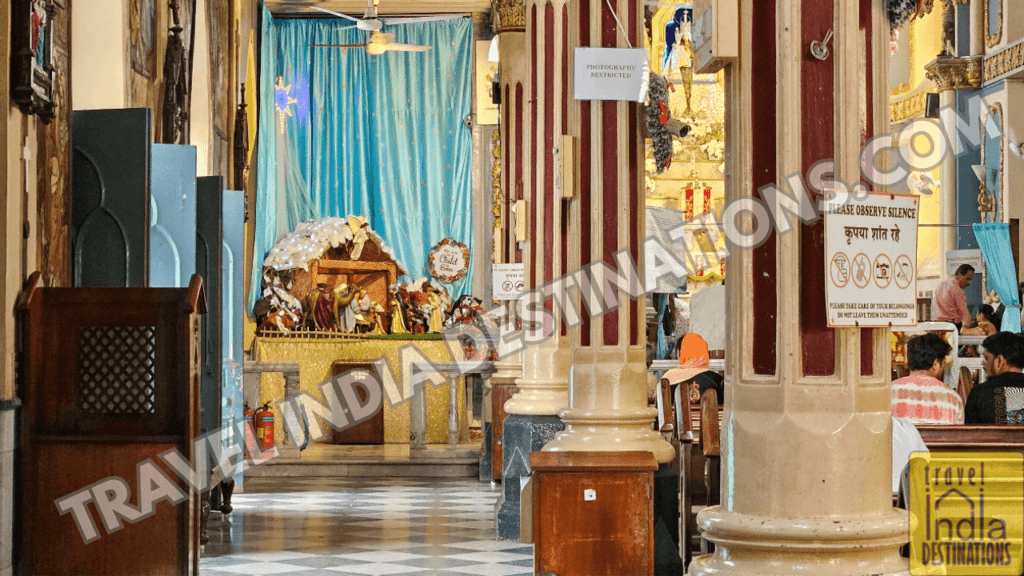
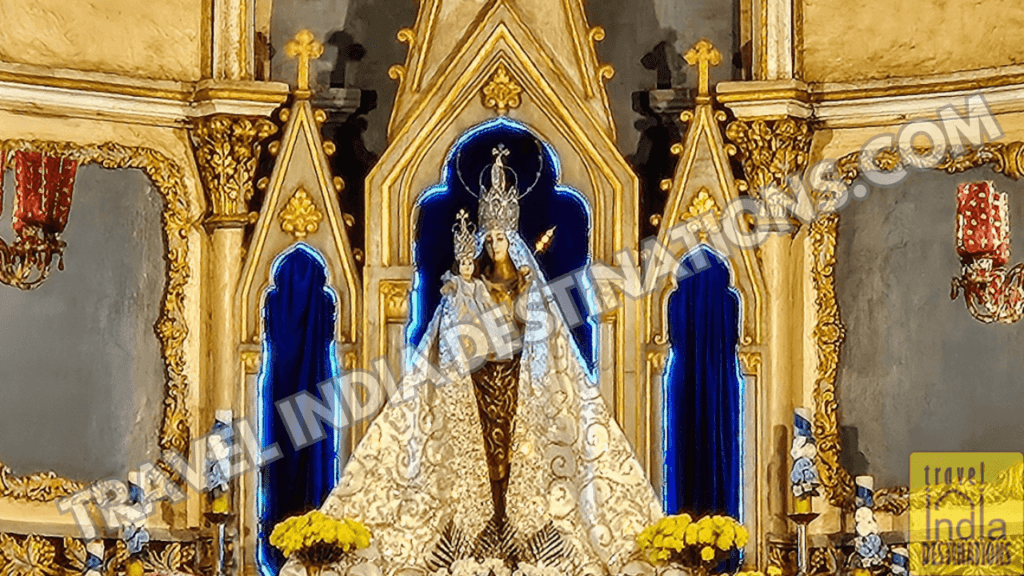
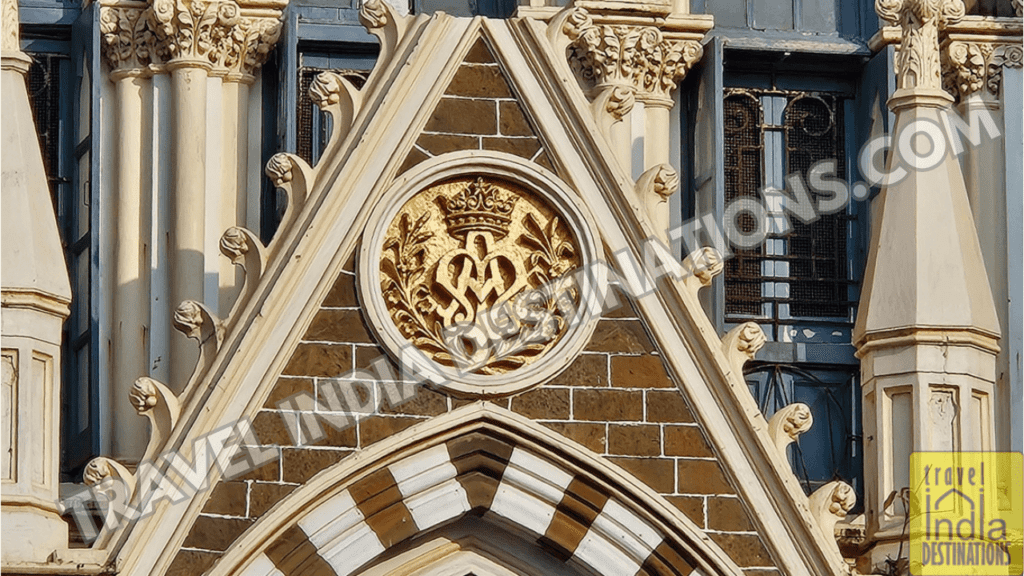
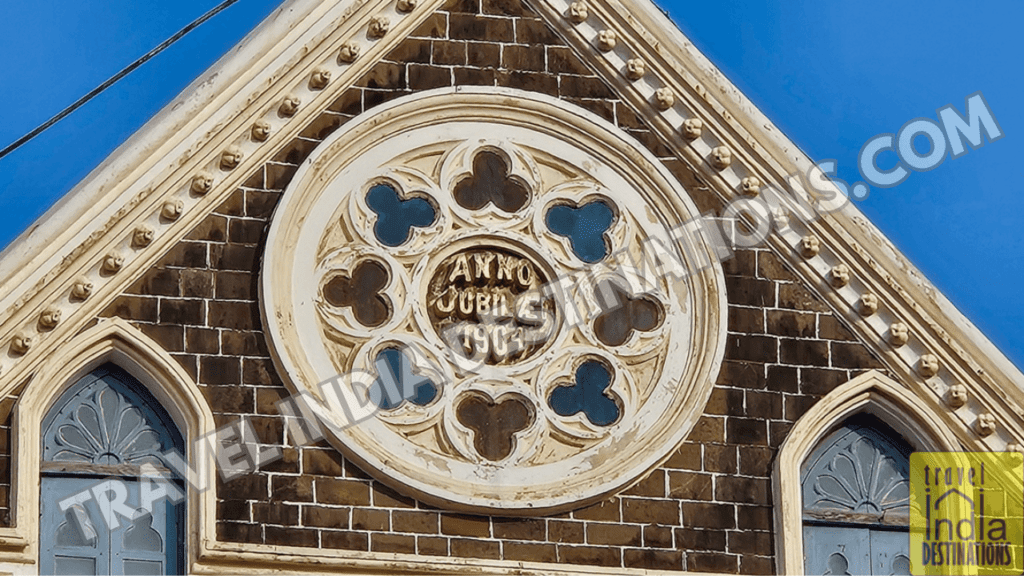
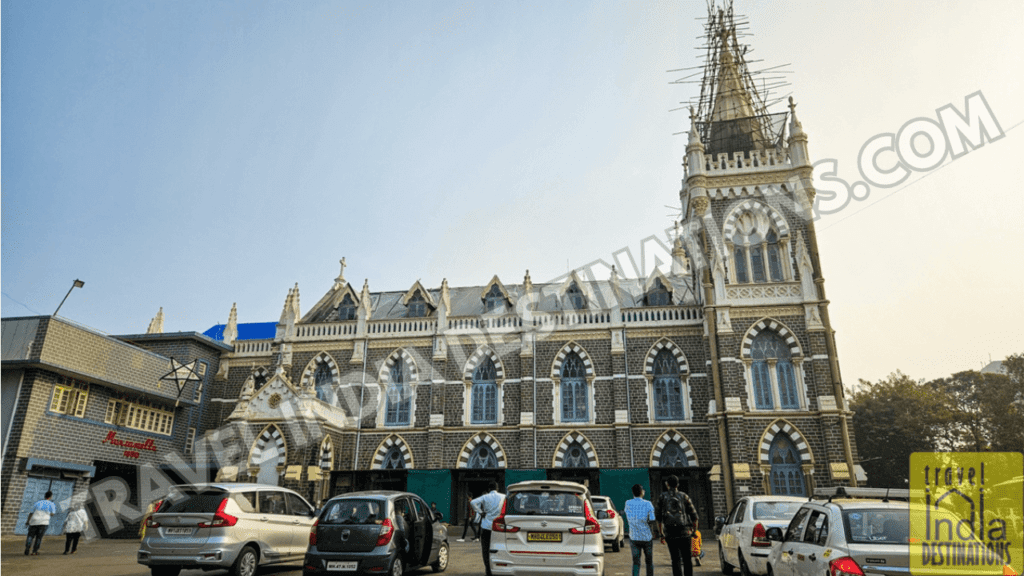
Outside the Church
Right opposite the church, you can also visit the Oratory of Our Lady of Fatima which has 38 steps. As you climb up and down you can also see the sevenfold message of Our Lady mentioned on the walls.
The seven words are Prayer, Penance, Meditation, Peace, Rosary, Reparation and Sacrifice.
Also, just as you walk towards Mount Mary Basilica you will find roadside stalls that sell all kinds of candles, rosaries, decoration pieces and souvenirs that you can buy for yourself or for someone you love.
The church is also popular for the annual Bandra Fair which takes place in September. This week-long fair is also known as Mount Mary Church Festival. During the festival, thousands of various faiths come to the church offering prayers and to thank Mother Mary for her blessings.
Images Outside the Church
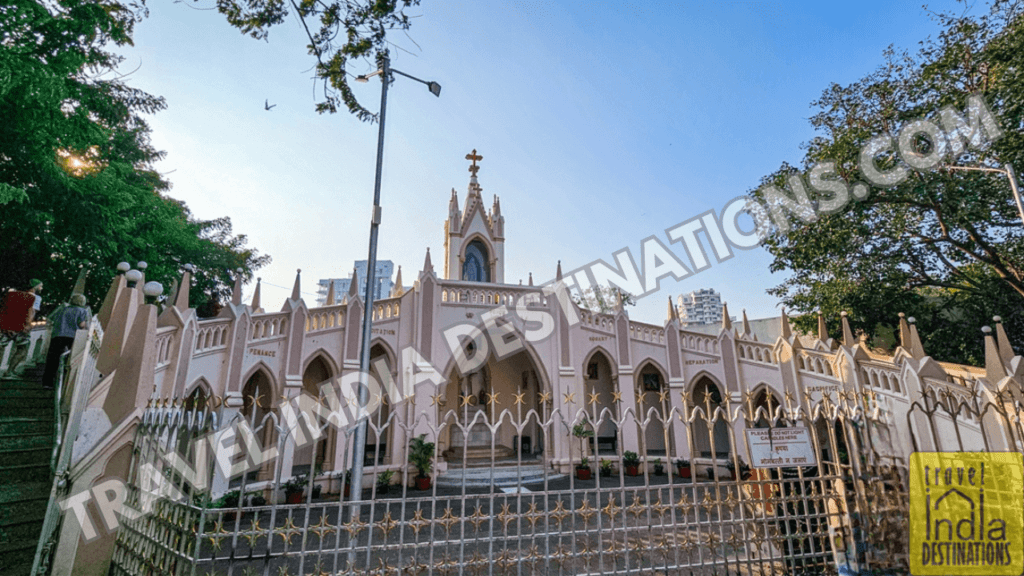
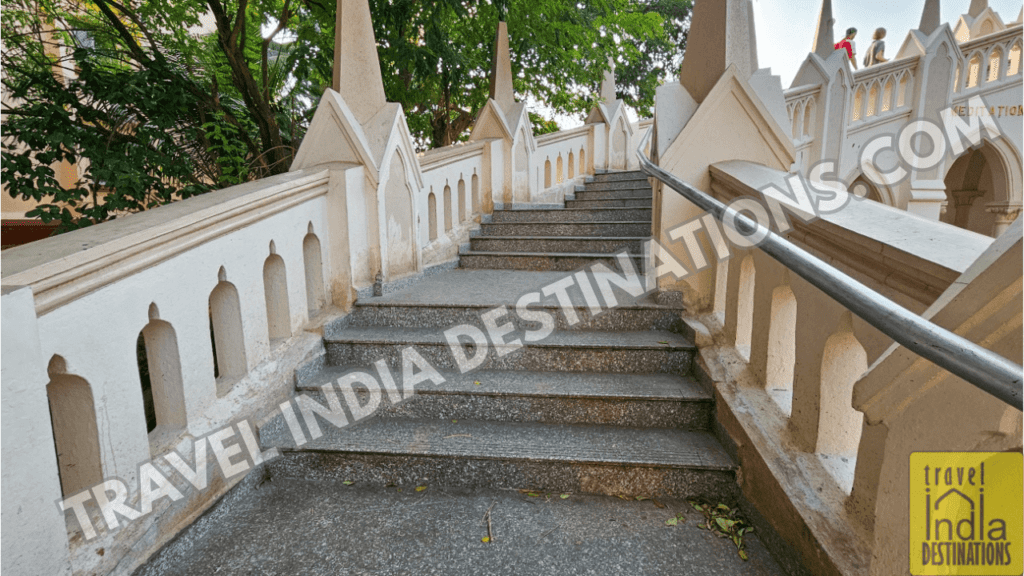
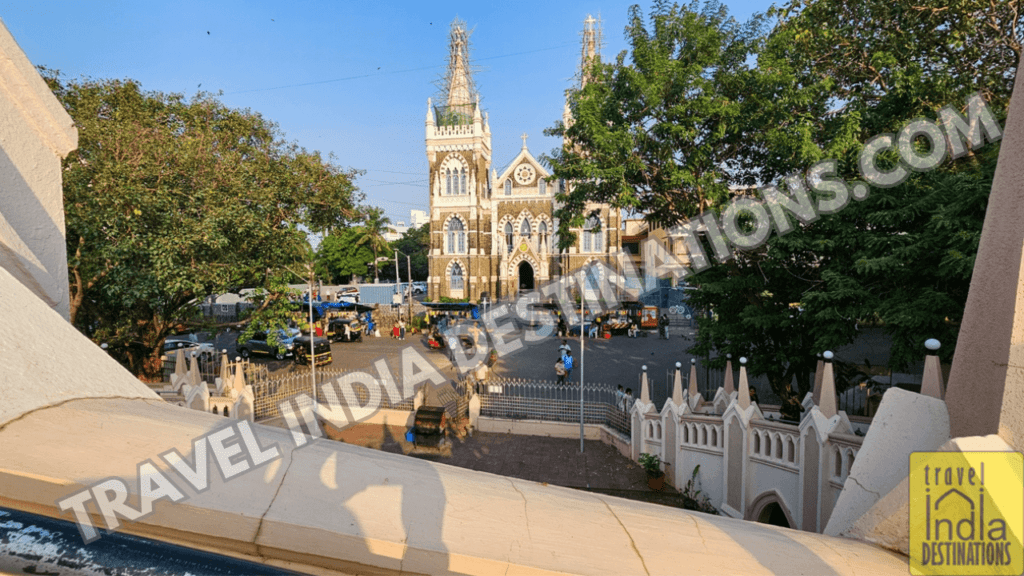
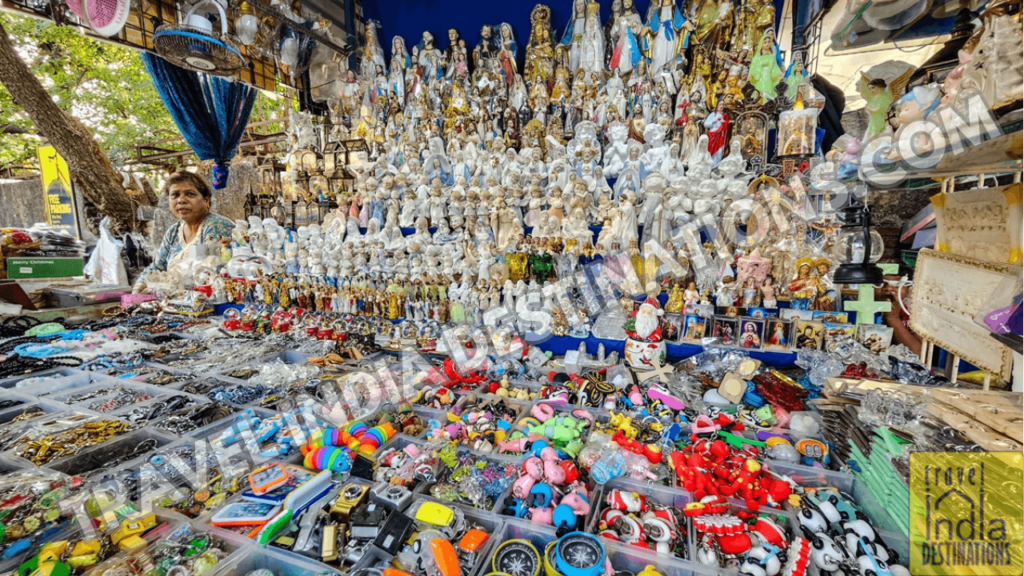
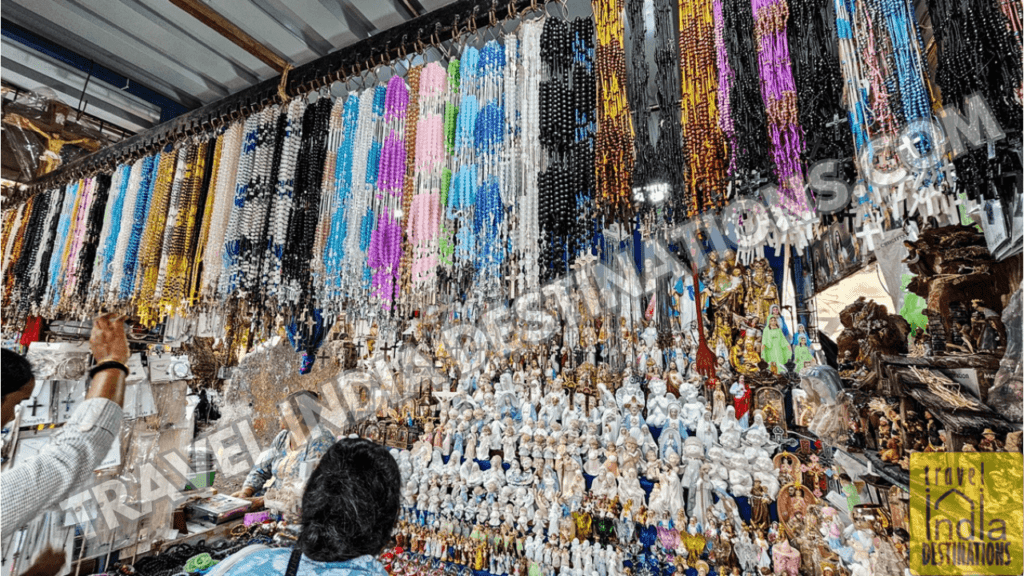
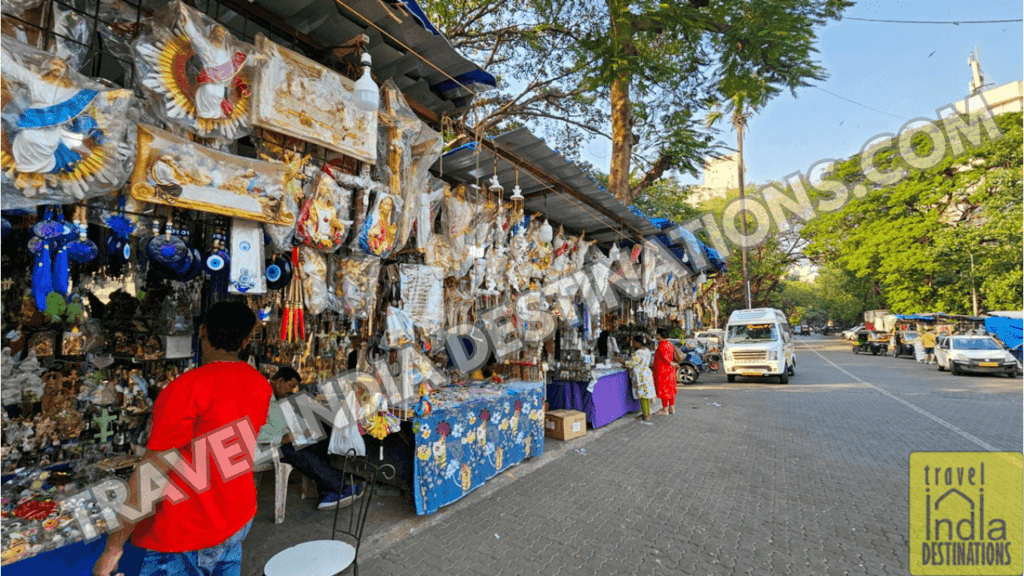
Conclusion
Over the years, Mount Mary Church in Mumbai has remained one of the most visited religious places. It remains one of the top churches in Mumbai. People from all walks of life including foreign tourist visit the basilica every day. If you are looking for a great spiritual experience you should visit this church while you are in the city. Apart from the Mount Mary Church Mumbai you can also take a tour of the Shrine of Don Bosco’s Madonna in Matunga.
Also, on the same road, you will find St Stephen’s Church which sits quietly in the shadow of this famous church in Mumbai. However, that calls for another dedicated post coming up next week.
4 comments
Excellent photos, and I enjoyed the history, Sharukh. It’s fun to learn what was going on in the world before our country was even settled.
Glad that you enjoyed reading the post. For me, the best part is that I get to discover more information about my city unrelated to the church. I can always use that in some other posts.
Wow, I would never have imagined that the church dates back to the 16th century. That’s quite a history you shared, Sharukh. The photos are beautiful too. Thanks for including some of the places and vendors outside the church too. That added a lot to the overall story. Hugs.
Glad that you enjoyed the post. There are a few more to come to conclude this church series. Probably the smaller ones tucked in different corners of the city.